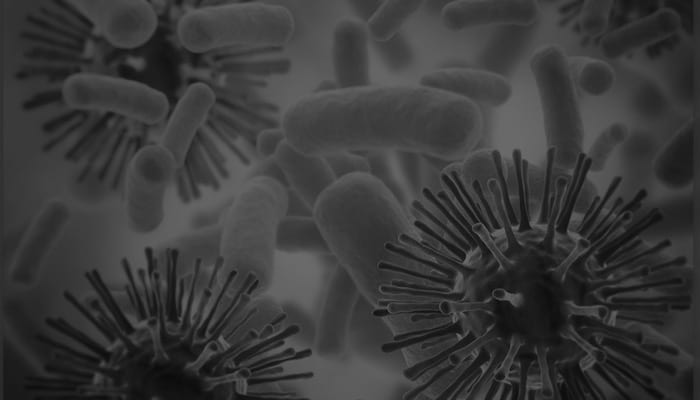Escaping bugs
aka Microbial Mystery 005
A 13 year-old female presented to the emergency department looking unwell and septic. She was started on ceftriaxone IV. A diagnosis of pyelonephritis was subsequently made, with no evidence of obstruction on ultrasound.
You are notified by the microbiology lab that her urine culture results are consistent with a urinary tract infection, with a pure culture of Enterobacter cloacae that is sensitive to ceftriaxone.
Questions
Q1. Would you continue the ceftriaxone or change to another antibiotic? Is this a trick question?
Answer and interpretation
Stop ceftriaxone and change to another antibiotic.
and
No.
Q2. Why?
Answer and interpretation
Although the organism is sensitive to ceftriaxone it belongs to the ESCAPPM group of gram-negative bacteria:
- Enterobacter
- Serratia
- Citrobacter
- Acinetobacter or Aeromonas (depending on which reference you use!)
- Proteus
- Providentia
- Morganella
These bacteria like to throw a sucker punch by being sensitive to ceftriaxone on the initial culture and sensitivity report (they are all Enterobacteriaceae except Acinetobacter). They all share a chromosomally-encoded cephalosporinase (a type of beta-lactamase) that is inducible. Thus they tend to develop cephalosporin resistance during treatment.
The cephalosporinase enzyme is not inhibited by beta-lactamase inhibitors like clavulinic acid.
Finally, for the uber-technical, the enzyme is an AmpC β-lactamase (Ambler molecular class C, Bush-Jacoby-Medeiros functional group 1). Other species may have similar resistance genes derived from this enzyme but carried on plasmids (e.g. E. coli and Klebsiella spp.).
Q3. What are the appropriate initial antibiotics for severe pyelonephritis?
Answer and interpretation
In Australia the suggested initial antibiotic choice is:
gentamicin 4 to 6 mg/kg (child <10 years: 7.5 mg/kg; ≥10 years: 6 mg/kg) IV, daily (adjust dose for renal function)
and
amoxicillin 2g (child: 50 mg/kg up to 2 g) IV, 6-hourly
In the event of penicillin allergy, gentamicin alone is generally sufficient. In patients for whom gentamicin is inappropriate, third generation cephalosporins are the second-line empiric treatment:
ceftriaxone 1 g (child: 25 mg/kg up to 1 g) IV, daily
or
cefotaxime 1 g (child: 25 mg/kg up to 1 g) IV, q8h
but this does not provide adequate treatment for Enterococcus infections.
Antibiotics should continue for 10-14 days and be guided by culture and sensitivities (but remember the ESCAPPM caveat!). A follow up urine culture following the completion of treatment should be performed.
References
- Antibiotic Therapeutic Guidelines (2010) [website]
- Mandell GL, Bennet JE, Dolan R. Mandell, Douglas, and Bennett’s Principles and Practice of Infectious Diseases, 7th ed (2009), Churcill Livingstone. [mdconsult.com]
- Venkatesh B, et al. Data Interpretation in Critical Care Medicine (2003), Butterworth Heinemann.

CLINICAL CASES
Microbial Mystery
Chris is an Intensivist and ECMO specialist at The Alfred ICU, where he is Deputy Director (Education). He is a Clinical Adjunct Associate Professor at Monash University, the Lead for the Clinician Educator Incubator programme, and a CICM First Part Examiner.
He is an internationally recognised Clinician Educator with a passion for helping clinicians learn and for improving the clinical performance of individuals and collectives. He was one of the founders of the FOAM movement (Free Open-Access Medical education) has been recognised for his contributions to education with awards from ANZICS, ANZAHPE, and ACEM.
His one great achievement is being the father of three amazing children.
On Bluesky, he is @precordialthump.bsky.social and on the site that Elon has screwed up, he is @precordialthump.
| INTENSIVE | RAGE | Resuscitology | SMACC

I would suggest limiting the list of AmpC(+) bacteria according to IDSA guidelines. Only three species carry a clinically significant risk of AmpC-related resistance: Enterobacter cloacae complex, Klebsiella aerogenes, and Citrobacter freundii. This would justify the change from ceftriaxone to cefepime or carbapenem. Other organisms with a low risk of AmpC induction (allowing ceftriaxone use) are S. marcescens, Providencia sp., and Morganella sp. In fact, most Enterobacterales carry the AmpC locus, however, its expression is clinically and microbiologically insignificant. Finally, the letter “P” of the ESCAPPM acronym relates to indole-positive Proteus species. This accronym was created when the Proteus genus included P. morganii and P. rettgeri, which are now classified as Morganella morganii and Providencia rettgeri. The only true indole-positive Proteus is now P. vulgaris, which doesn’t possess the AmpC locus; hence, the use of the acronym is no longer accurate.
Of course, there are other organisms carrying AmpC on plasmids (for example, some rare strains of E. coli, K. pneumoniae, Shigella, and Proteus mirabilis), but their overall prevalence has no impact on the choice of empirical treatment.